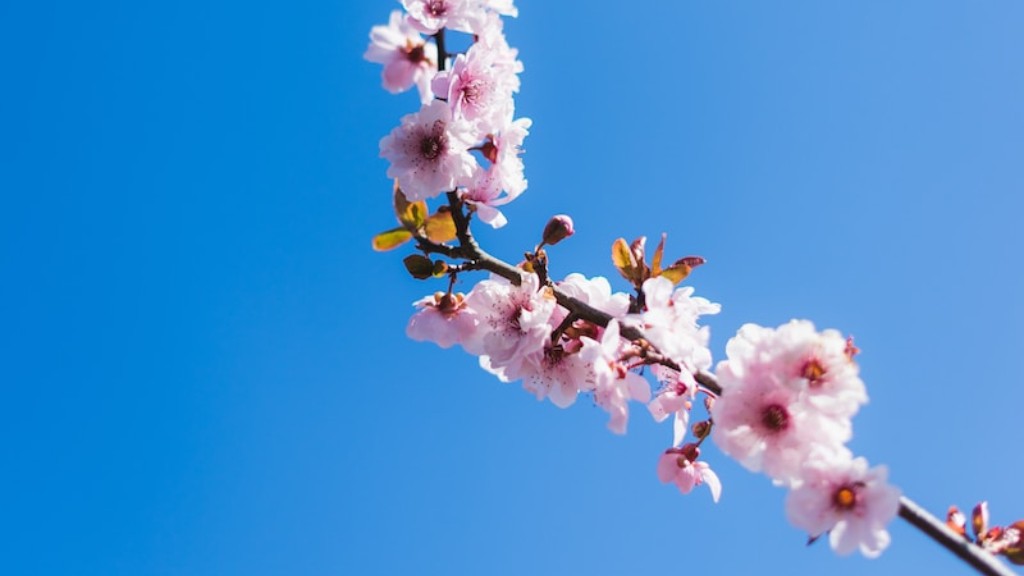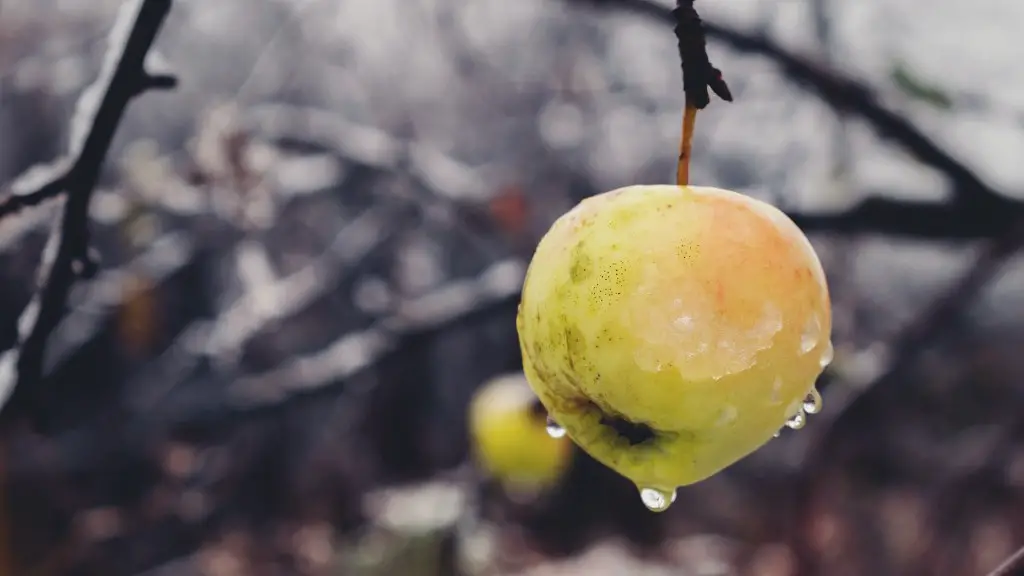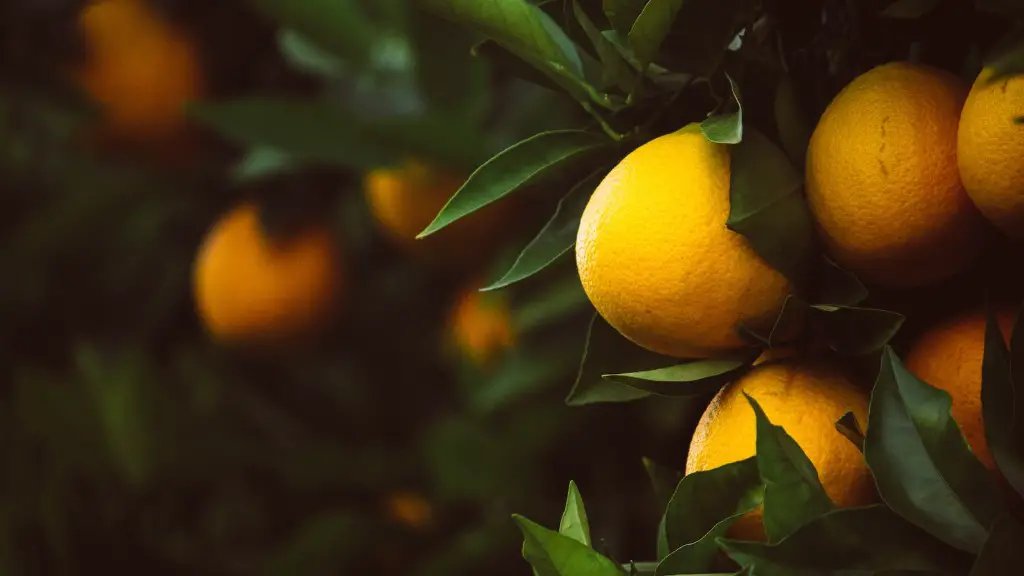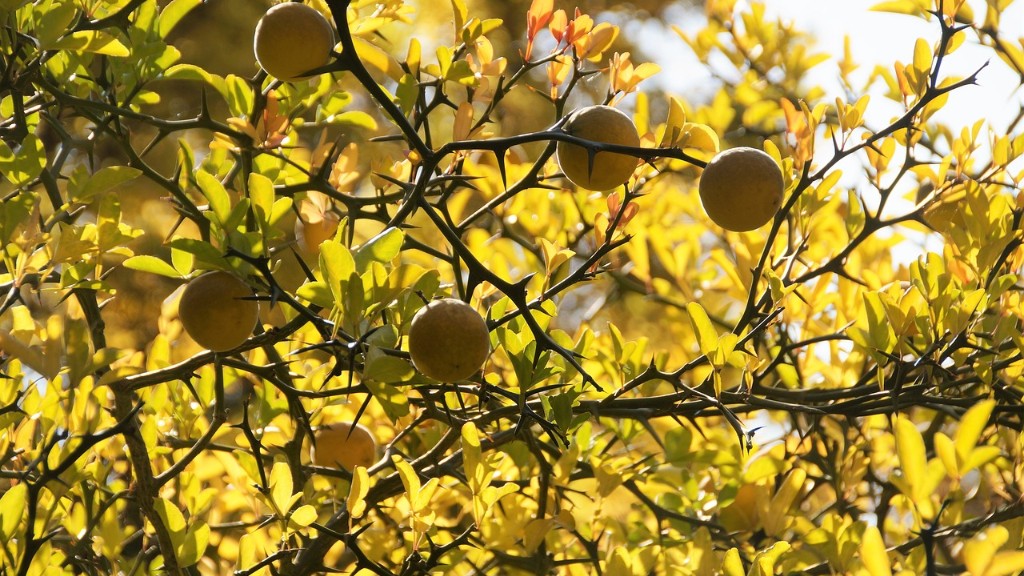A dwarf cherry tree is, as its name implies, a small variety of cherry tree that is suitable for cultivation in small, confined spaces. While all cherry trees can reach a maximum height of between 10 and 20 meters, a dwarf cherry tree is considerably shorter, growing to a maximum height of between 5 and 6 meters. Although this may seem small relative to what some species can reach, it is nonetheless an impressive size for something that can be maintained in a relatively small garden.
When considering how large a dwarf cherry tree will get, there are several factors to take into account. Firstly, the age of the tree is key. A tree which has been recently planted will naturally be much smaller than an established tree, while a young tree will likely grow more than an older one, although it should still be dwarfed in comparison to some of the larger varieties. Additionally, the soil type and climate play a role, as an acidic soil can cause the tree to reach greater heights than one grown in neutral or alkaline conditions.
The type of cherry tree also affects size. Floral cherry trees are usually the widest in terms of size, with some varieties reaching heights of up to 15 meters. Fruiting cherry trees are usually smaller, growing to heights of up to 8-10m. However, there are also dwarf varieties of both types which are suitable for growing in confined spaces and can reach heights of up to 6m.
Another factor to consider is pruning. As with most plants, pruning is essential for healthy growth of a cherry tree and can control the size and shape of the tree. Pruning should be done annually, with dead and diseased branches removed and the shape of the tree maintained through selective pruning. Pruning can help to control the height of the tree, although not all dwarf varieties should be pruned excessively as this may affect the quantity and quality of fruit produced.
In general, a dwarf cherry tree will reach a height of 5-6m when mature, although this can vary depending on the soil type and climate, as well as the age and type of tree. Pruning can also play a role in controlling the height of the tree, although not all varieties should be pruned excessively. With the right care and regular pruning, a dwarf cherry tree can be a graceful and productive addition to any garden.
Soil Requirements for Dwarf Cherry Trees
When deciding whether a dwarf cherry tree is suitable for your garden, it is important to consider the soil requirements of the tree. A dwarf cherry tree prefers an acid soil pH of between 5.5 and 6.5, and the soil should be enriched with organic matter before planting to ensure healthy growth. In addition to this, the tree should be planted in an area that is sheltered from strong winds and direct sunlight.
It is also important to ensure that the soil is well-draining, as waterlogged soil can lead to root rot, whicn can cause the dwarf cherry tree to become weak and susceptible to disease. If your soil is particularly heavy, you may need to add some sand or compost to improve drainage and aeration. If your soil does not meet these requirements, a raised bed can be a great solution for growing a dwarf cherry tree, as it can be filled with the right mix of soil and compost to ensure healthy growth.
Once planted, a dwarf cherry tree should be fertilized regularly with balanced fertilizers to ensure its proper growth and development. It is also important to water the tree regularly, as cherry trees can suffer if the soil is allowed to dry out completely.
Pest Problems to be Aware of
As with any fruit trees, a dwarf cherry tree is susceptible to pests and diseases, so it is important to be vigilant when it comes to monitoring your tree for signs of any problems. The most common pests which can affect a dwarf cherry tree include aphids, scale insects, spider mites and various species of caterpillars. These can cause damage to the leaves, stems and fruit of the tree, so it is important to take measures to control them.
To control pests, it is important to remove any affected leaves and stems promptly, as well as regular prune any dead or diseased wood. For severe infestations, you may need to seek the advice of a pest control professional, who can help identify the species of pest and recommend a suitable method of control. Additionally, using natural predators, beneficial insects, and beneficial fungi can help to keep the tree pest-free.
Harvesting and Storing the Fruit
Once the fruit has been allowed to ripen on the tree, it can be harvested and stored. Depending on the variety, cherry trees can produce between 5 and 10 pounds of cherries, depending on the age, size and health of the tree. It is important to wait until the cherries are ripe before harvesting, as cherries that are harvested too early will not be as sweet.
To store cherries, it is important to carefully select them and remove any spoiled or damaged cherries which could affect the rest of the batch. Cherries should then be stored in a sealed container or, for extended storage, a refrigerator or deep freezer can be used.
Once ready to use, cherries can be preserved in a number of ways, including canning, drying and freezing. For canning, cherries are best canned with pits in, while for drying, they should be pitted and then dried either in a dehydrator or in the oven on a low heat. Frozen cherries can be stored for up to 6 months in an airtight container in a refrigerator or deep freezer.
General Care And Maintenance
Taking good care of a dwarf cherry tree is vital for its health and productivity, so it is important to be aware of the general care and maintenance requirements for this type of tree. As a general rule, cherry trees need to be watered regularly and should be fed with a balanced fertilizer once or twice a year to ensure proper growth and health. It is also important to prune the tree in late winter or early spring to maintain its shape and size, as well as to remove any dead or diseased branches.
The area around the tree should also be kept weed-free, and mulch should be applied in the spring to keep the soil moist. The mulch should be applied loosely around the base of the tree, not directly onto the tree itself. Additionally, it is important to regularly inspect the tree for signs of disease or damage, and you should consult an expert if you are concerned that your tree may be infected or suffering from any other problems.
Harvesting the Cherries
Cherries should be harvested when the fruit is ripening and turning red. To facilitate the harvesting process, a short ladder can be used to reach the top of the tree. When picking the cherries, it is important to be careful as the fruit can be delicate and easily damaged. To avoid bruising the cherries, a gentle touch is best. An old sheet or sheet of paper can be spread on the ground beneath the tree to make it easier to collect the fallen fruits.
After picking, cherries should be stored in a cool place until they are ready to be eaten. If the cherry tree is large and there are a lot of cherries on the tree, it may be worth considering selling some of the surplus fruits at a farmers’ market or to local shops. This can be a great way to make some extra money while at the same time enjoying the fruits of your hard work.
Planning Your Dwarf Cherry Tree
When planning to grow a dwarf cherry tree in your garden, it is important to consider the size and shape of the tree, as this will determine where you should plant it. A dwarf cherry tree typically takes up about the same space as a 3-4m tall tree, and therefore needs to be planted in an area with sufficient space for its expanding girth. It is also important to consider the height and width of the tree, as a larger tree may shade out its smaller neighbours or cause overcrowding.
In addition to this, it is important to consider the sun exposure of the area you are planning on planting the tree in. A dwarf cherry tree needs to be planted in an area that receives 6-8 hours of sun per day, as this will ensure it grows and produces a good crop of fruit. If planting in an area with insufficient sun, additional lighting can be used to supplement the natural light.
Finally, it is important to make sure the soil in which the dwarf cherry tree is planted is suitable for it. The ideal soil should be rich in organic matter and have a pH of between 5.5 and 6.5. If the soil is not suitable, it might be necessary to add compost or sand to improve the drainage, aeration and nutrient content.
General Tips For Growing Dwarf Cherry Trees
When growing a dwarf cherry tree, it is important to pay close attention to its care and general maintenance. Here are some tips for ensuring your dwarf cherry tree remains healthy and productive:
- Water regularly in dry periods, as this will help to keep the tree healthy and ensure fruit production.
- Fertilize with a balanced fertilizer once or twice a year to provide the necessary nutrients for healthy growth and fruit production.
- Prune the tree each year in late winter or early spring to maintain its shape and size, as well as to remove any dead or diseased branches.
- Apply mulch each spring to keep the soil moist, but make sure not to pile it too heavily around the base of the tree.
- Inspect regularly for signs of disease or damage, and contact an expert if you are concerned about any problems.
By following these tips, you can ensure that your dwarf cherry tree remains healthy and produces an abundant crop of sweet cherries each year.





